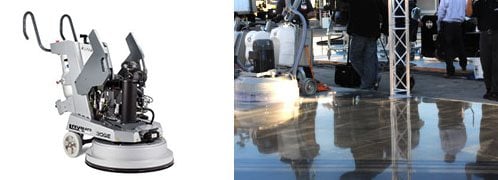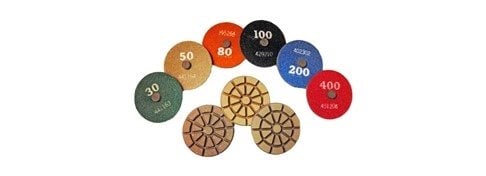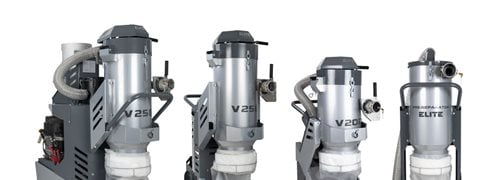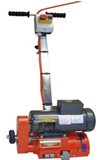Concrete Scarifiers (Planers) & Scabblers
How to use a scarifying machine for concrete milling, planing and moreScarifiers, also called concrete planers or milling machines, remove concrete faster and more aggressively than grinders. That's because they use the pummeling action of multi-tipped cutting wheels, or flails, that rotate at high speeds to chip away at the concrete surface. You can choose from many different styles of interchangeable cutter assemblies to achieve the profile you need for each job.
Shop for scarifiers and surface preparation equipment
SCARIFYING MACHINE OPTIONS
Equipment choices range from small handheld units with 2- to 3-inch cutting widths to manual push or self-propelled walk-behind machines with working paths of 4 to16 inches. Production rates for walk-behind models range from 350 to 1,500 square feet per hour, depending on machine size and horsepower, material to be removed, hardness of the concrete and type of cutter used.
Cutting depths are adjustable on most machines, with some models achieving up to 1/4 inch of material removal in one pass. More sophisticated models have self-leveling scarifying heads that automatically adjust to contours in the floor. As with grinders, scarifiers are available with a choice of power options (including gas, electric, diesel and air) and with hookups for attaching a vacuum to collect dust and debris.
Find concrete resurfacing contractors near me
The cutting wheels themselves are mounted on shafts on a removable drum. The number of cutter shafts per drum varies by model, but generally machines with more shafts can hold more cutters per loading for increased scarifying action and faster production rates. Look for machines with quick-change drum designs that allow you to switch or replace cutters in minutes.
 Propane Grinding Machines
Go cordless with the LAVINA elite series
Propane Grinding Machines
Go cordless with the LAVINA elite series
 Concentrated Concrete Cleaner
Clean and profile concrete in a single step
Concentrated Concrete Cleaner
Clean and profile concrete in a single step
 Surface Prep Diamonds
Superior floor with reduced steps
Surface Prep Diamonds
Superior floor with reduced steps
 CPS G-170 Electric
17" Floor Grinder 230 volt ($7,600)
CPS G-170 Electric
17" Floor Grinder 230 volt ($7,600)
 LAVINA® ELITE Vacuums
Ranging from 16" to 32"
LAVINA® ELITE Vacuums
Ranging from 16" to 32"
WAYS TO USE A CONCRETE SCARIFIER
A variety of interchangeable cutting wheels and drum setups allow scarifiers to perform a broad range of profiling tasks. Applications include:
- Removing coatings (even heavy floor tile mastics and rubbery elastomeric or epoxy materials)
- Light or heavy milling
- Grooving walkways to make them slip resistant
- Removing trip hazards in sidewalks
- Leveling misaligned concrete joints and uneven surfaces
ATTACHMENTS FOR SCARIFYING CONCRETE
Most cutters are made of tungsten carbide or hardened steel and come in a myriad of styles to suit different applications. You can choose from different diameters and widths, number of cutting teeth, and tip styles (blunt or flat for aggressive removal, sharp for gentler scarifying action, or angled for scraping). Different grades of cutters are also available, with ultra-premium grades providing a much longer service life and more predictable finish. Manufacturers can recommend the cutter style and grade best suited for your needs.
TIPS FOR HOW TO USE A CONCRETE PLANER
- In addition to varying the cutter type, you can also achieve different finishes by adjusting the spacing and pattern of the cutter assemblies. The closer the cutters are spaced, the smoother the finish. A wide spacing achieves a coarse finish. Some contractors bring drums outfitted with different cutter types and arrangements to each job.
- A scarifier generally leaves behind a rough finish and may create ridges in the concrete. On jobs where you need a smoother finish, you may need to grind the surface after scarifying.
- Although both tungsten carbide and steel cutters can perform similar tasks, tungsten carbide cutters are more aggressive and longer lasting, making them practical for jobs requiring high production rates or scarifying of high-psi concrete. Steel cutters have a shorter life, but are also less expensive.
SCABBLERS
A scabbler is the equipment to use for jobs such as creating slip resistant surfaces, "profiling" surfaces for new overlayments or coatings, and removing loose or deteriorating concrete.







